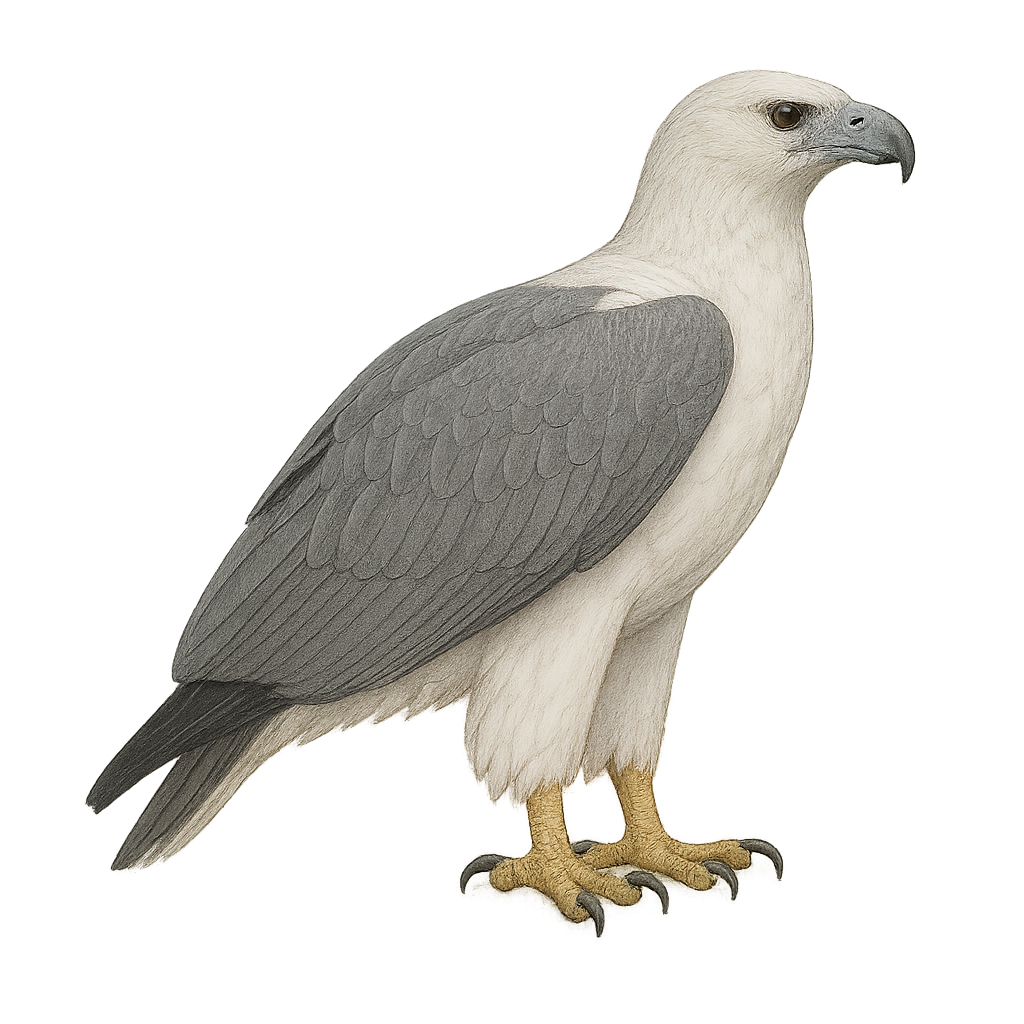Your wildlife photography guide.
Explore the white-bellied sea eagle in detail, study its behavior, prepare your shots.
Where to observe and photograph the white-bellied sea eagle in the wild
Learn where and when to spot the white-bellied sea eagle in the wild, how to identify the species based on distinctive features, and what natural environments it inhabits. The WildlifePhotographer app offers tailored photography tips that reflect the white-bellied sea eagle’s behavior, helping you capture better wildlife images. Explore the full species profile for key information including description, habitat, active periods, and approach techniques.
White-bellied Sea Eagle
Scientific name: Icthyophaga leucogaster

IUCN Status: Least Concern
Family: ACCIPITRIDAE
Group: Birds
Sensitivity to human approach: Suspicious
Minimum approach distance: 30 m
Courtship display: November to January
Incubation: 35-40 jours
Hatchings: December to February
Habitat:
Coasts, estuaries, lakes
Activity period :
Primarily active during the day, with peak activity in the morning and late afternoon.
Identification and description:
The White-bellied Sea Eagle is a large diurnal raptor, easily identified by its white head, belly, and tail, contrasting with its dark grey wings and back. It measures between 70 and 85 cm in length with an impressive wingspan reaching up to 2.2 meters. This predator primarily feeds on fish but can also capture birds, reptiles, and small mammals. It is often seen near coasts, estuaries, and large lakes, using its powerful talons to snatch prey. The White-bellied Sea Eagle is territorial and forms monogamous pairs for life. Its distinctive call, a loud "ki-ki-ki," often echoes through its natural habitat.
Recommended lens:
400 mm – adjust based on distance, desired framing (portrait or habitat), and approach conditions.
Photography tips:
To photograph the White-bellied Sea Eagle, it is advisable to use a telephoto lens of at least 400mm to capture detailed images from a distance. Look for observation points near coasts or estuaries where these eagles are often active. Be patient and discreet to avoid disturbing their natural behavior. The best times to observe them are early in the morning or late afternoon when the light is soft and the eagles are more active. Use a tripod to stabilize your camera and achieve sharp images.
The WildlifePhotographer App is coming soon!
Be the first to explore the best nature spots, track rutting seasons, log your observations, and observe more wildlife.
Already 1 430 wildlife lovers subscribed worldwide

